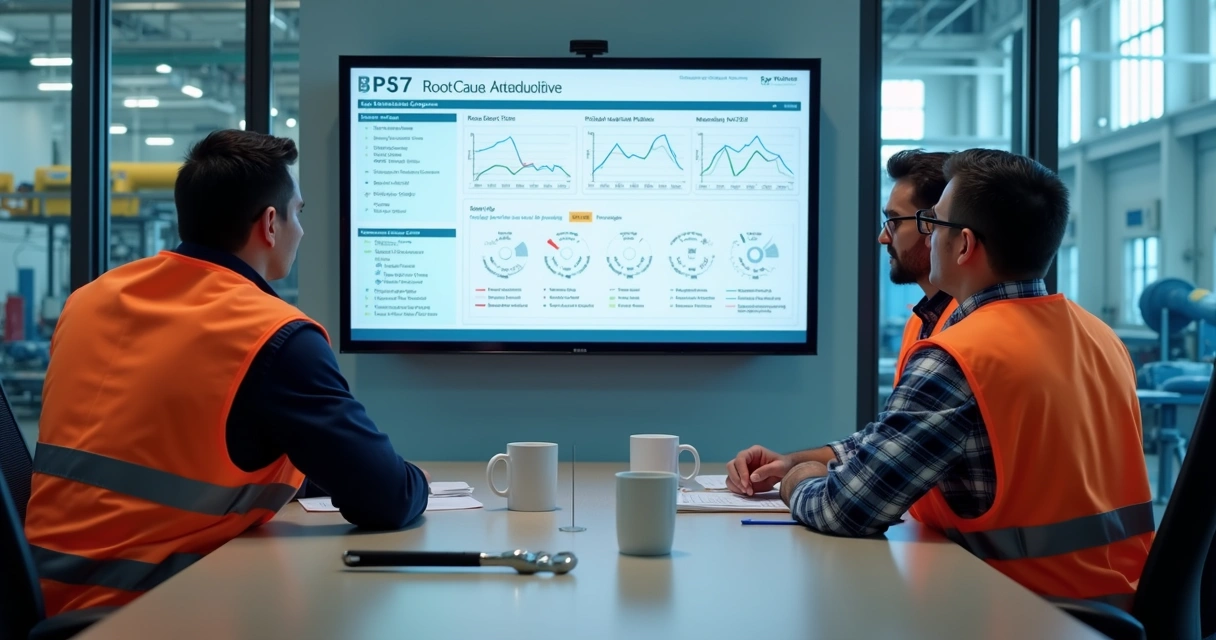Predictive vs. Preventive Maintenance: What’s Changing in 2025?

I was on a plant floor a few months ago, where a line operator looked at me and said, “We do what the plan says, then hope the bearings agree.” It sounded fair. It also felt old. In 2025, the plan is shifting. Hopes are turning into signals, models, and quick root cause notes that do not need a late-night scramble.
This year is not about picking sides. It is about timing, data, and people who need clear steps. Predictive and preventive can work together. When they do, downtime drops, spares last longer, and reports write themselves, or almost.
What these strategies really mean
Let us keep it simple.
- Preventive maintenance uses a schedule. You change filters every two months. You inspect belts every 500 hours. It is steady, easy to plan, and good at stopping known wear.
- Predictive maintenance uses condition data to decide when to act. When vibration spikes, you look. When oil analysis shows rising metal content, you act. The aim is to fix at the right time, not too early, not too late.
Do the right work, at the right moment.
What’s changing in 2025
Three shifts stand out this year.
1) Faster insight from AI. The gap from alarm to answer is shrinking. Tools now map symptoms to likely causes in minutes. Prelix is part of this shift, bringing instant cause hints, 5 Whys drafts, and clear diagrams that help teams move from alert to action. When reports and compliance notes build themselves, planners can focus on the next job instead of hunting for context.
2) AR steps into daily work. Visual guides on tablets and glasses reduce guesswork during inspections. According to reporting from ManufacturingTomorrow, adding AR to maintenance tasks let some teams finish work up to 46.8% faster. That kind of speed helps preventive tasks get done on time and with fewer returns to the same spot.
3) Better sensor coverage, lower cost. More machines are getting low-power sensors, even on assets that once seemed too small to monitor. Short, local models at the edge catch issues early, then share only the useful bits. It sounds a little dull, but it makes alerts cleaner and cuts noise.

How preventive and predictive fit together
I think of them like two gears. One is routine. One reacts to signals. They mesh.
- Use preventive for wear items with known life, safety checks, and legal inspections. It keeps the basics in shape.
- Use predictive for rotating assets, fluid systems, or anything that drifts before it fails. It guards the edge cases and the silent trends.
- Blend both by setting a base schedule, then letting data move tasks forward or push them back. That is where the savings appear.
Prelix helps in the middle, where people ask why something failed. The platform speeds up root cause work and turns failure notes into learning. If you want a deeper take on RCA, see this practical guide to RCA for industrial teams and a companion piece on RCA with AI for industrial teams. For teams reading in Portuguese, there is a similar guia de RCA com IA, and frequent updates in the blog em português. The English side of the Prelix-Blog also shares new lessons from the field.
What to change on your plan in 2025
This year, a few moves give quick wins.
- Start with one line or cell. Pick assets with past surprises. Map their failure modes and the signals you already have.
- Tighten your data. Calibrate sensors, clean tag names, and add missing context like load and duty cycle. Good data is simple and clear.
- Set alert rules you can live with. Start narrow. If an alert needs a second context, write it down. Stack two weak signals to avoid noise.
- Build a short RCA habit. When a fault happens, capture the path and generate a quick 5 Whys. Prelix can turn that into a diagram and a report in minutes, so lessons stick.
- Give techs visual help. Add short AR or tablet steps to the most missed tasks. The time saved compounds, as noted by the ManufacturingTomorrow findings on AR-enabled tasks.

Measuring return without magic numbers
ROI talk can get fuzzy. Keep it grounded.
- Track avoided downtime minutes. Compare last year’s unplanned stops to this year’s. Tag each saved event with a short note, like “caught bearing wear early.”
- Watch spare part use. If predictive work moves tasks closer to true need, parts stretch longer, and scrap drops.
- Look at wrench time balance. Less time chasing false alarms, more time on planned work, and fewer returns for the same fault.
- Count report time. Automated RCA and compliance notes can save hours per incident. Prelix often cuts this step to minutes.
Small wins, repeated, change the curve.
Common pitfalls and how to dodge them
Three traps show up often.
- Too many alerts. Fix by starting with a short set of signals and plain rules. Review weekly and trim.
- Bad sensor placement. Put vibration sensors near the load and in a repeatable spot. Fasten well. Loose sensors lie.
- No link to action. Every alert should name a task, a skill, and a time target. If no one knows what to do, the alert is noise.
Do not forget people. A quick stand-up to share what worked is worth more than a long slide deck. I have seen a two-minute walk-through change a crew’s whole week.
Cost and scaling without the headache
Not every asset needs a sensor. Start where failure hurts most. Use portable tools on the rest, then add permanent sensors once the case is clear. A platform like Prelix ties the thread from signal to root cause and then to a report. That trace makes audits simpler and boosts trust in your numbers.
As you scale, keep one page of standards: tags, alert naming, report layout. Boring, yes. It pays off when new sites join and your data still makes sense.
Schlussfolgerung
Predictive vs. preventive is not a fight. It is a handshake. 2025 brings faster insight, clearer steps, and new ways to guide techs on the floor. Start small, blend both methods, and hold your plan to simple, measurable goals. Prelix can help you spot root causes fast, generate clean diagrams, and keep your reports in shape without the late nights. If you want to move from hope to signals, this is a good year to do it. Reach out to Prelix to see how your team can turn failures into clear, useful actions and start improving results today.
Häufig gestellte Fragen
What is predictive maintenance?
Predictive maintenance uses live or frequent condition data, like vibration, temperature, or oil analysis, to decide when to act. The goal is to fix issues close to the actual need, which helps avoid both early part swaps and surprise breakdowns. Many teams pair it with fast root cause tools, such as those in Prelix, to move from an alert to a clear fix plan and a short report.
What is preventive maintenance?
Preventive maintenance is planned work based on time or usage. You change filters, grease bearings, and inspect safety systems on a fixed cycle. It is predictable and supports standards and audits. Most plants keep a strong preventive base, then layer predictive checks where signals give extra warning.
How is maintenance changing in 2025?
Three changes stand out. AI speeds up diagnosis and reporting. AR guides techs through tasks, with reporting from ManufacturingTomorrow noting up to 46.8% faster task completion when AR is added. Sensors are cheaper and easier to fit, so more assets can send the early clues teams need. Tools like Prelix knit these pieces into one flow, from alarm to 5 Whys to final notes.
Lohnt sich eine vorausschauende Wartung?
It is, when aimed at assets with high impact. Start with the lines that cause the most lost time or scrap. Track avoided stops, fewer rushed callouts, and shorter report writing. If you can show a few prevented events and smoother audits, the case often pays for itself. Pilots help prove the value before you scale.
Wie viel kostet die vorausschauende Wartung?
Costs vary by asset count, sensor type, and software choices. Many teams begin with a small set of sensors on the top risk machines and a platform to read signals and document causes. That keeps costs low while you build proof. As the gains grow, you can add more coverage and link the results to your maintenance system. Prelix fits into that flow by speeding up diagnosis and reports without heavy setup.
